A friend had an aluminum fork fail not too long ago, and let me take a look at the bits to analyze, so I thought I’d share it with you. This fork failure was likely very typical, but it had some fun surprises.

The fork in question is a name-brand all-aluminum cyclocross fork. Sized for 700C wheels, cantilever brakes. This fork was well-used for many years, and failed in classic “JRA” fashion, just as the rider was starting off from a stop while on an ordinary road ride. Both legs sheared off just below the fork crown, as you can see above, and the rider was not seriously injured.
Lucky thing, as fork failure is horrible and can wreck your whole life if you’re unlucky. I do not recommend it.
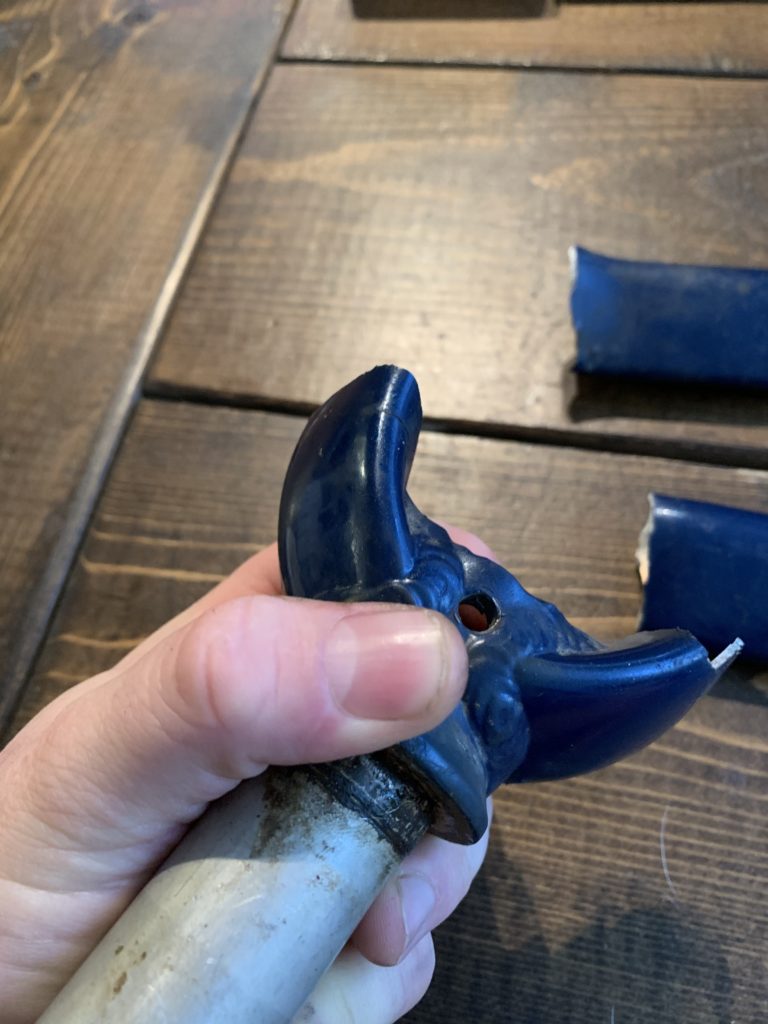
There’s various ways to make a fork like this, but this one was built in a simply and effectively: the crown is a fairly regular cylindrical shape, and the pre-formed one-piece aluminum legs are welded to the crown. The welds are not perfect, but look strong and did not fail.
There are other ways of building aluminum or composite forks. You can even glue the parts together, not as crazy as it sounds. This fork is built simply, but the design is sound.
Both legs failing at the same time while under no serious load sounds surprising, and it should be. For one thing, IT DIDN’T HAPPEN. This failure was baked in some time before the last ride, and this kind of failure is common, and you can see it in “sudden” failures of metal parts in all kinds of situations.
What follows is going to look like an engineering analysis but I can promise you: I am not an engineer, a technician, or in any way qualified to discuss this professionally. I can’t even tell you the relevant math. With that disclaimer, let’s do some non-engineering not-really-analysis!
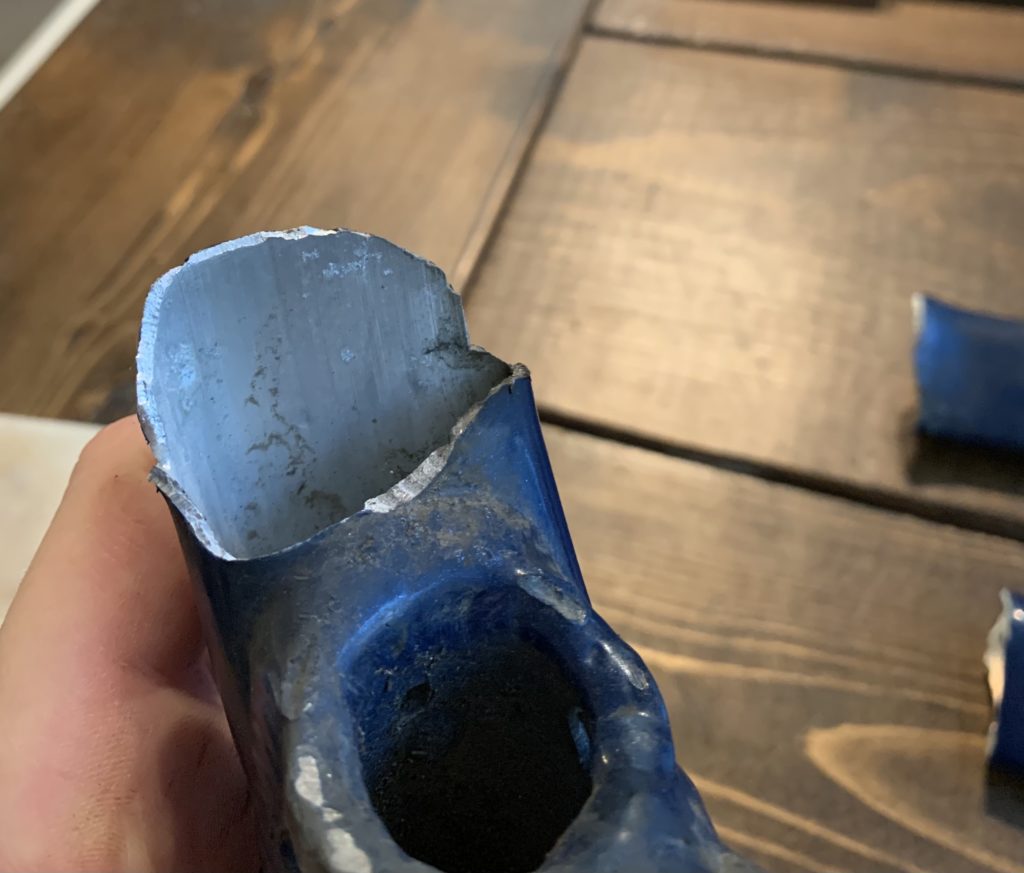
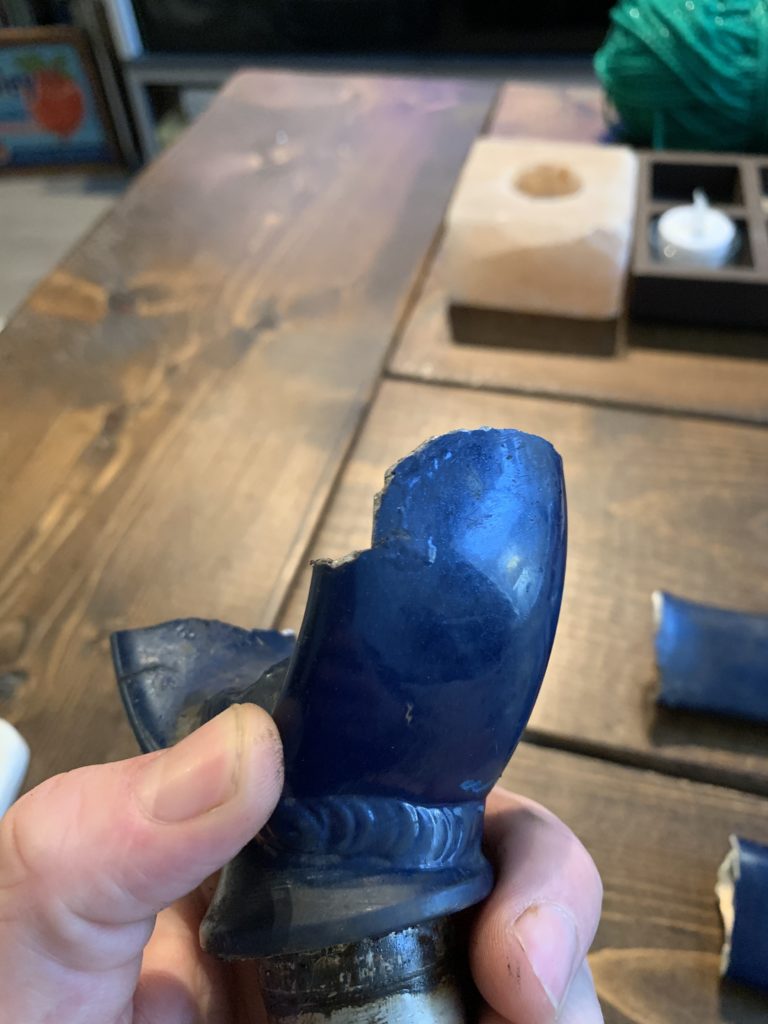
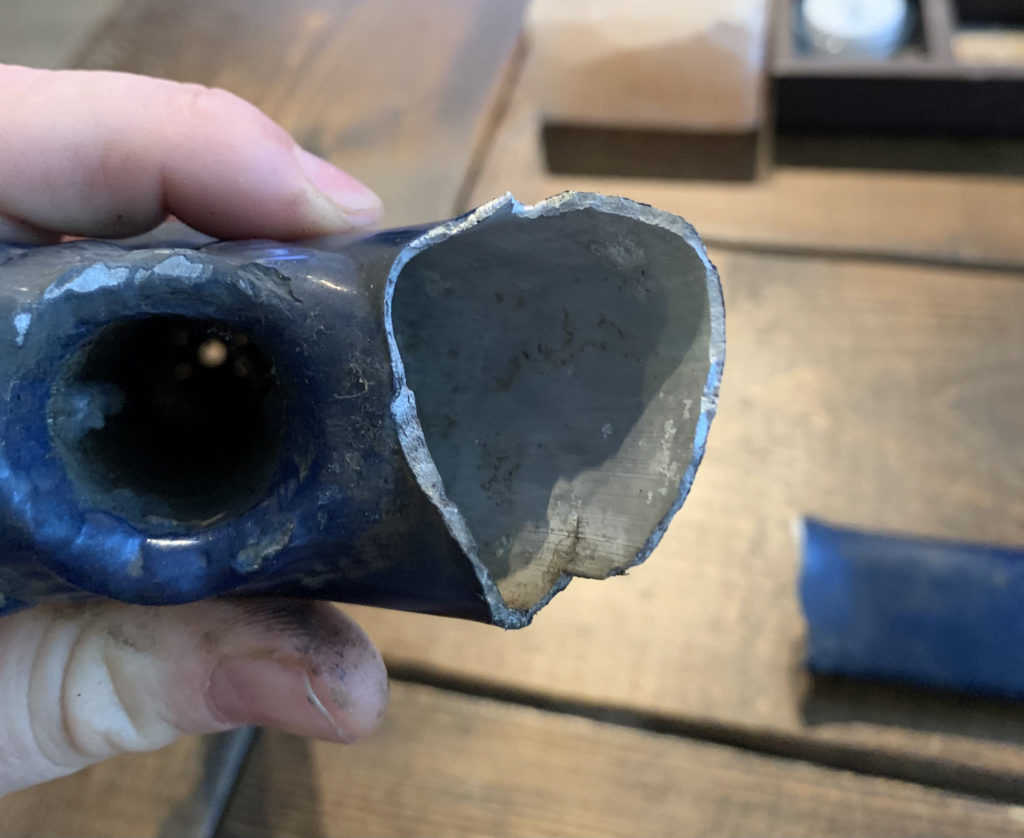
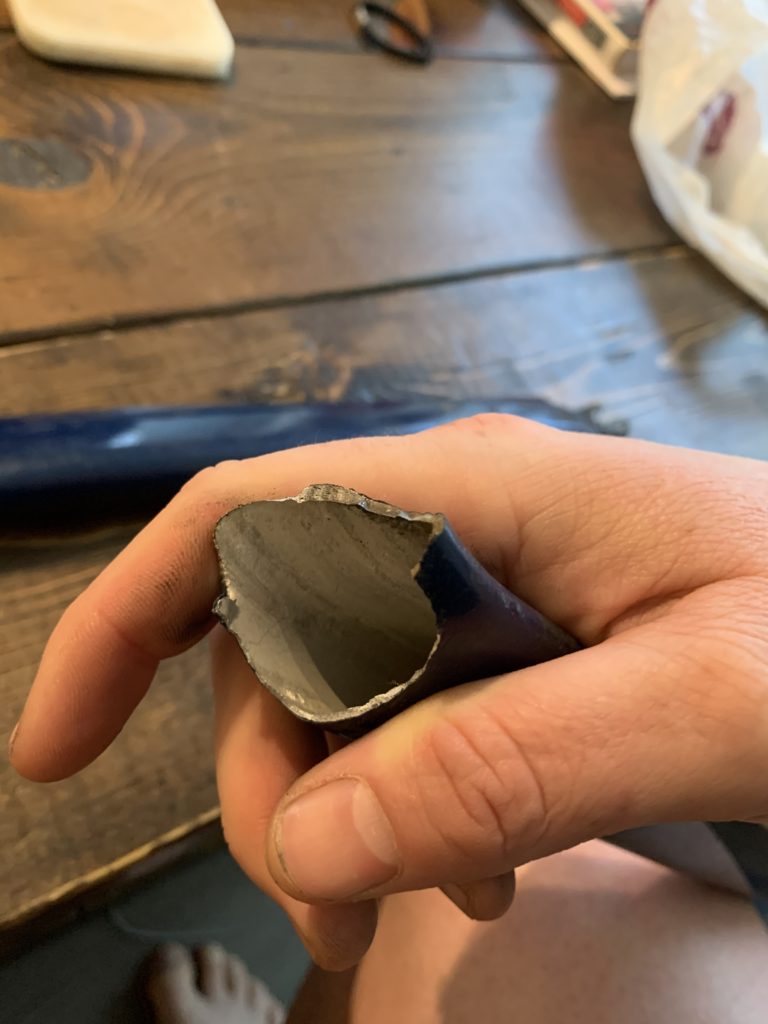
When a specialist sees metal parts fail like this, the first thing they’ll look for is signs of the initial failure, and this is a textbook example. If you look at those photos above (and the captions) you’ll see I keep talking about dark discolored areas. That’s where the part initially failed. You get a small crack that forms in the part somehow, but the part is still strong enough to hold together. However, the crack is there, and starts to flex, wear, propagate, and get dirt into it. So you get a distinctive area of the fracture zone that just looks older, because it is older. In this fork, the rear part of the left leg shows this distinct signature for a few millimeters of the fracture zone: on the inside and on the fracture surface itself, dirty areas indicating this isn’t metal that was recently exposed to the world. On the outside, those subtle paint bubbles, which sometimes are just paint bubbles, in this case indicate a failure of the metal underneath. I don’t know how obvious all of this would have been when the fork was cracked but not yet failed. The paint bubbles were definitely there to be seen, but the crack may have been nearly invisible without aggressive inspection.
There’s not much “plastic deformation” in this failure. The metal hasn’t been stretched out of shape much from the original form, except at the very front of both fork legs, which I take as meaning the failures started at the back of the fork legs, and the fronts only broke loose when the crack was so far open the shape of the fork was deforming, which would be the fractions of a second before total failure.
This crack has formed at a pretty high load point: without getting over my head with load and force diagrams, there’s a variety of forces that literally hinge on the top of the fork legs, above the cantilever brake posts and below the lower crown race, where the weight of the entire bike and rider meets the fork. The back of the fork leg, where I think the problem started, is under a lot of tensile loads even when a bike is just loaded up with a rider and not doing anything else, and I think that area gets a lot of dynamic loads when the bike is being used, so it’s a natural weak spot for a failure. All that means in this case is there probably wasn’t a factory defect in the metal: the most stressed part of the fork broke. You might think that’s a failure of design decisions, but my guess is the fork is designed so that the place where it failed is naturally the strongest point: if you make that part of the fork leg strong, then the nature of economically building the part means you probably end up with a metal tube that is plenty strong all along the rest of the leg (even if you only need half the wall thickness halfway down the leg, it’s a fussy operation to create a variable-wall-thickness formed aluminum tube like that, and by the time you cost out that part, your engineer tells you it would be cheaper, stronger, and lighter to make it out of carbon fiber).
Anyway, this is how metal likes to fail, quite often: a small crack starts, it doesn’t fail abruptly, but it does continue to fatigue, and cracks can propagate fairly effectively, so over some amount of active load cycles, the small failure becomes a total failure. In this case, the back of the left fork leg got a little crack, repeated use of the bike made that crack get a bit bigger and the left leg a bit weaker, until finally it was weak enough to really flex, at which point the load on both fork legs was too much and everything “suddenly” failed. QED, where’s the tea?
Now let’s look at the boring right fork leg, which only failed because its twin cracked up.
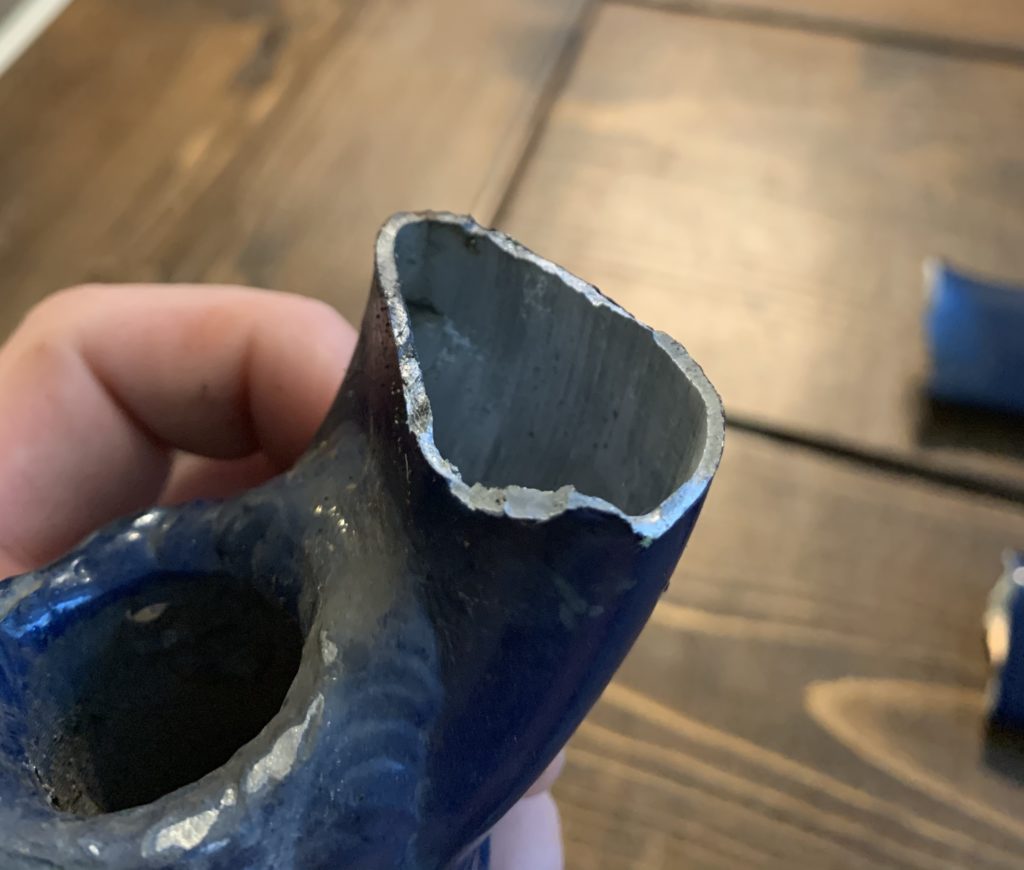
There is a small discolored area at the back of the top of the right fork leg, which leads me to believe this crack formed earlier than the last instants of failure, but the relative lack of discoloration in the fracture surface, the lack of external paint bubbling, and such makes me think this was the secondary failure, and probably didn’t happen that long before the final failure. I am not an expert; an expert might be able to estimate whether this failed days, minutes, or seconds before the end.
But we get a bonus in this right fork leg.
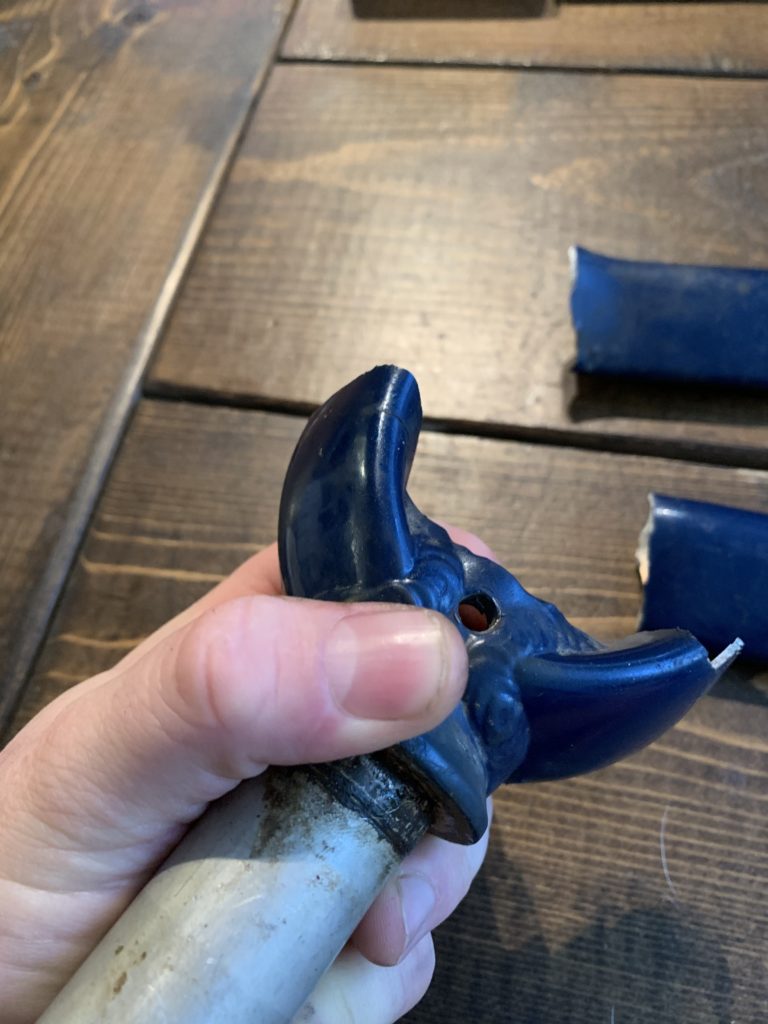
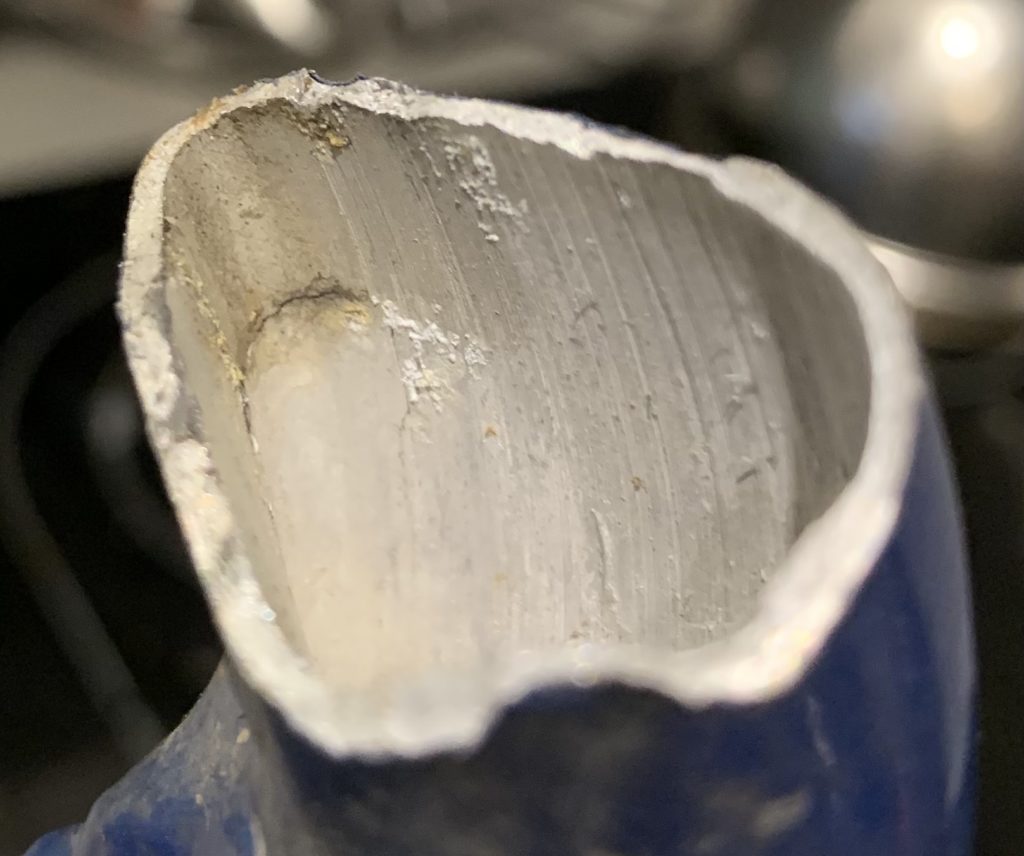
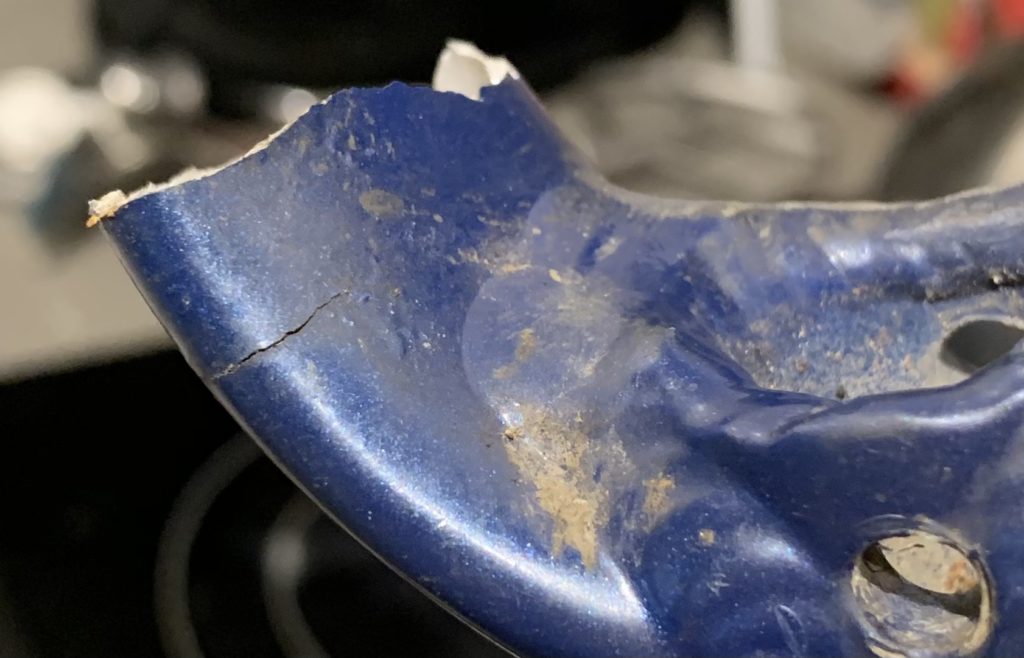
But there was a second killer! It got beat to the punch. The right fork leg was grievously cracked in its own way, but hadn’t failed before the left leg got around to shooting its shot. I find these photos especially interesting because we get to examine this crack in its glorious live state, very much like what you’d see if you were carefully inspecting a metal part for cracks before the part had failed.
As for this fork, well, I know most of the history. This fork had a long service life, I believe it was used in cyclocross races, and aside from the part where it dumped an unlucky rider on the road during its last ride, it gave reasonable service in semi-reasonable circumstances for a reasonable amount of time.
It is possible all this damage was initiated by a single major shock, which then became a time bomb, but it’s also possible this was the accumulated fatigue of hard service. An expert might be able to figure out the answer, but I don’t know.
This isn’t a design failure, and I’d say it’s not an aluminum failure either: I’ve seen steel forks fail in similar and different ways (indifferent quality control on brazed joints is a classic), and I’ve replaced a well-used, non-failed composite fork as a preventative measure. Parts have a service life, and by their nature bike parts are built pretty light, because a limited (though not that limited) service life is more palatable than a heavy bike, for the buyers who buy this kind of bicycle.
I hope these pretty photos of bike-part cracks and failures will teach you two things: how to spot pre-failure cracks in metal, and that it’s worth inspecting your bike for possible failures on a fairly regular basis. The photo-essay you save may be your own.
